Weeping Norway Spruce
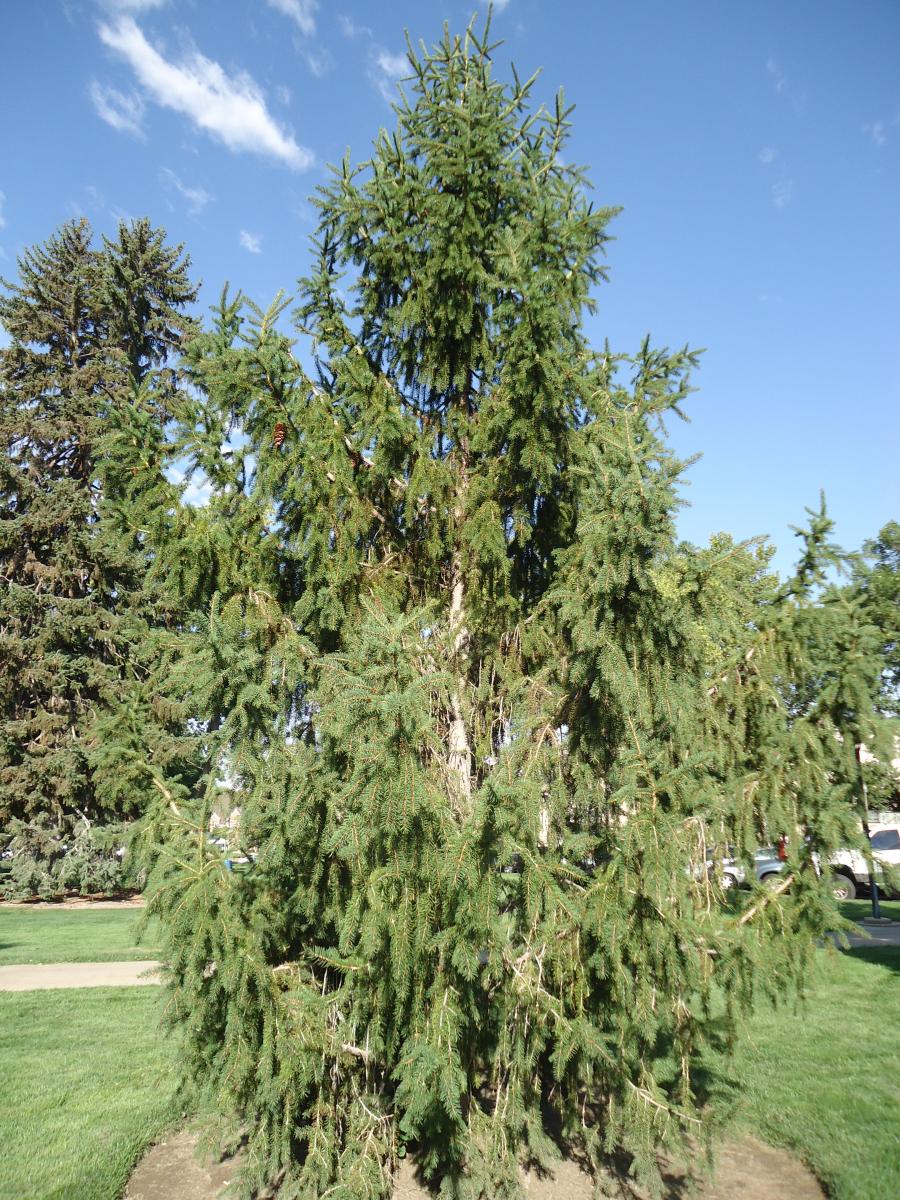
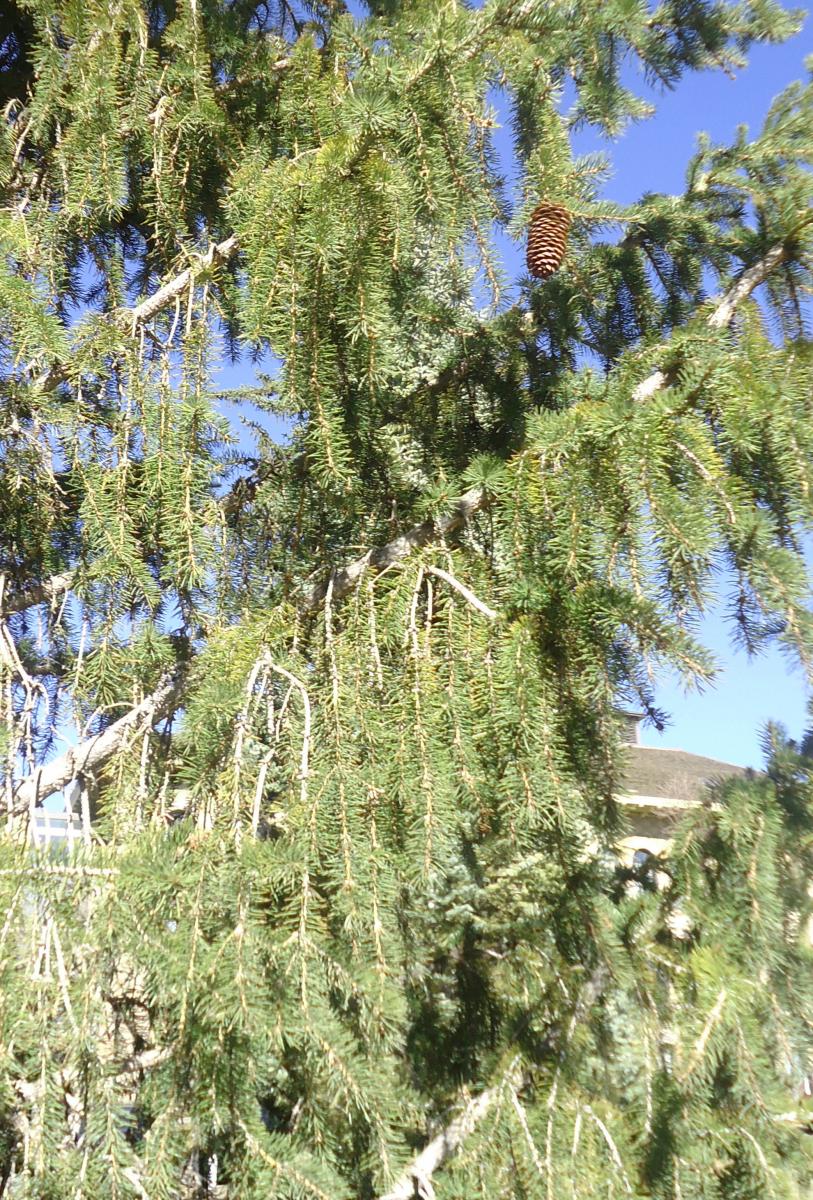
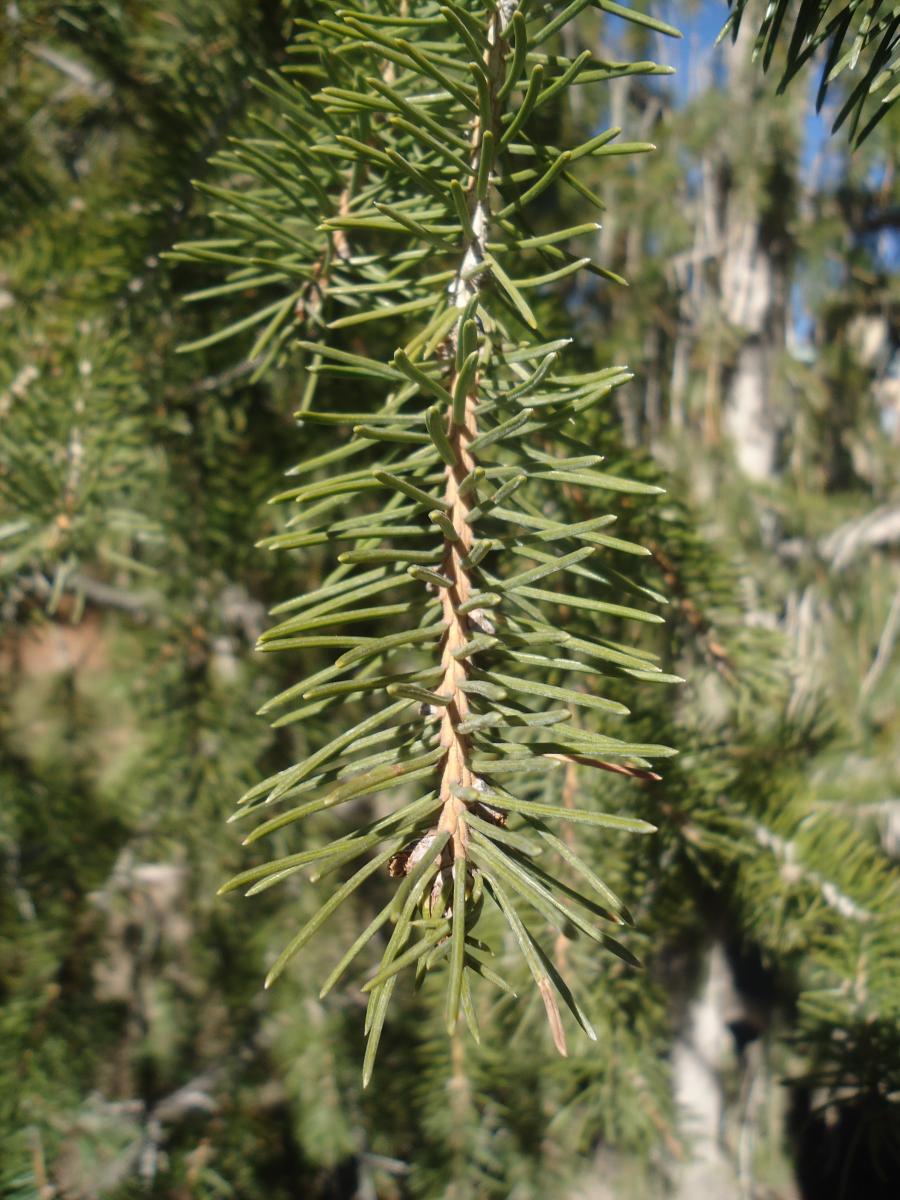
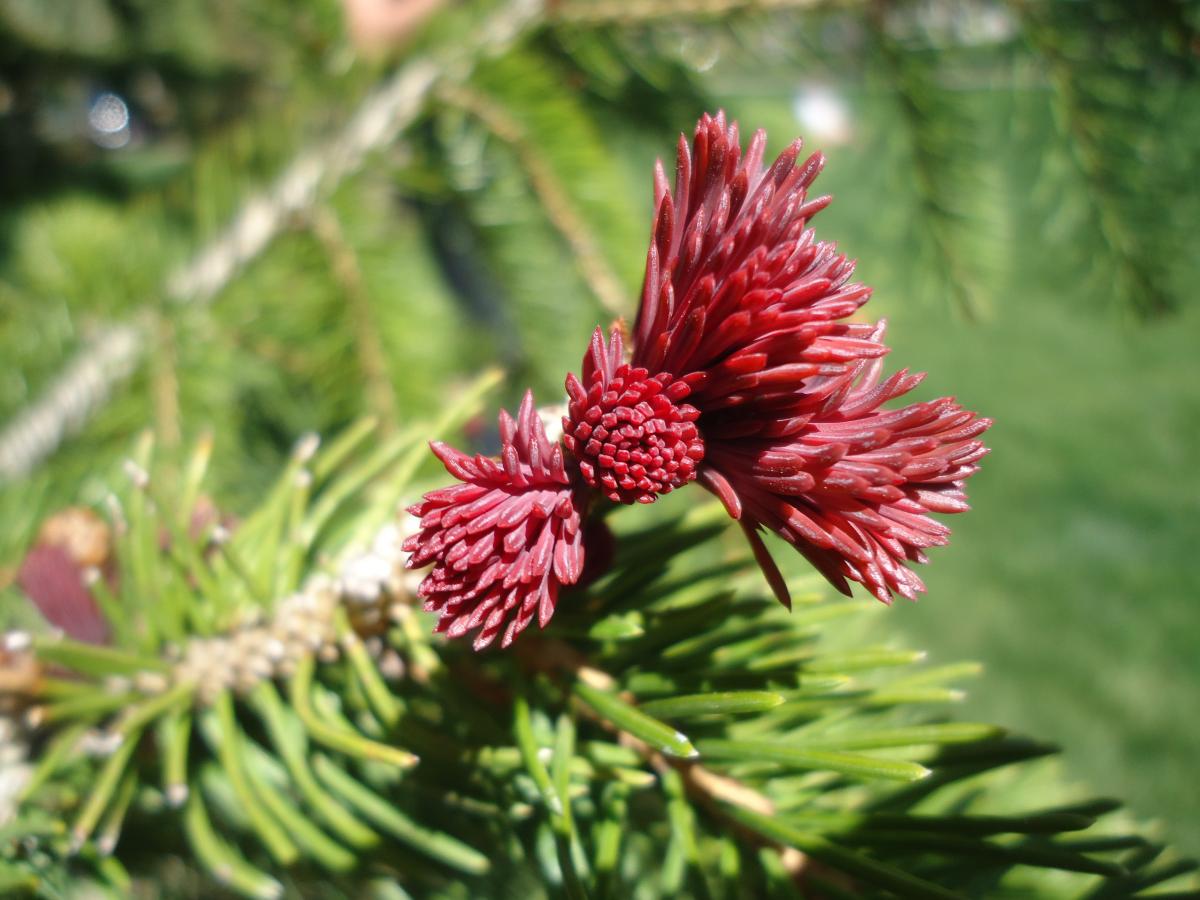
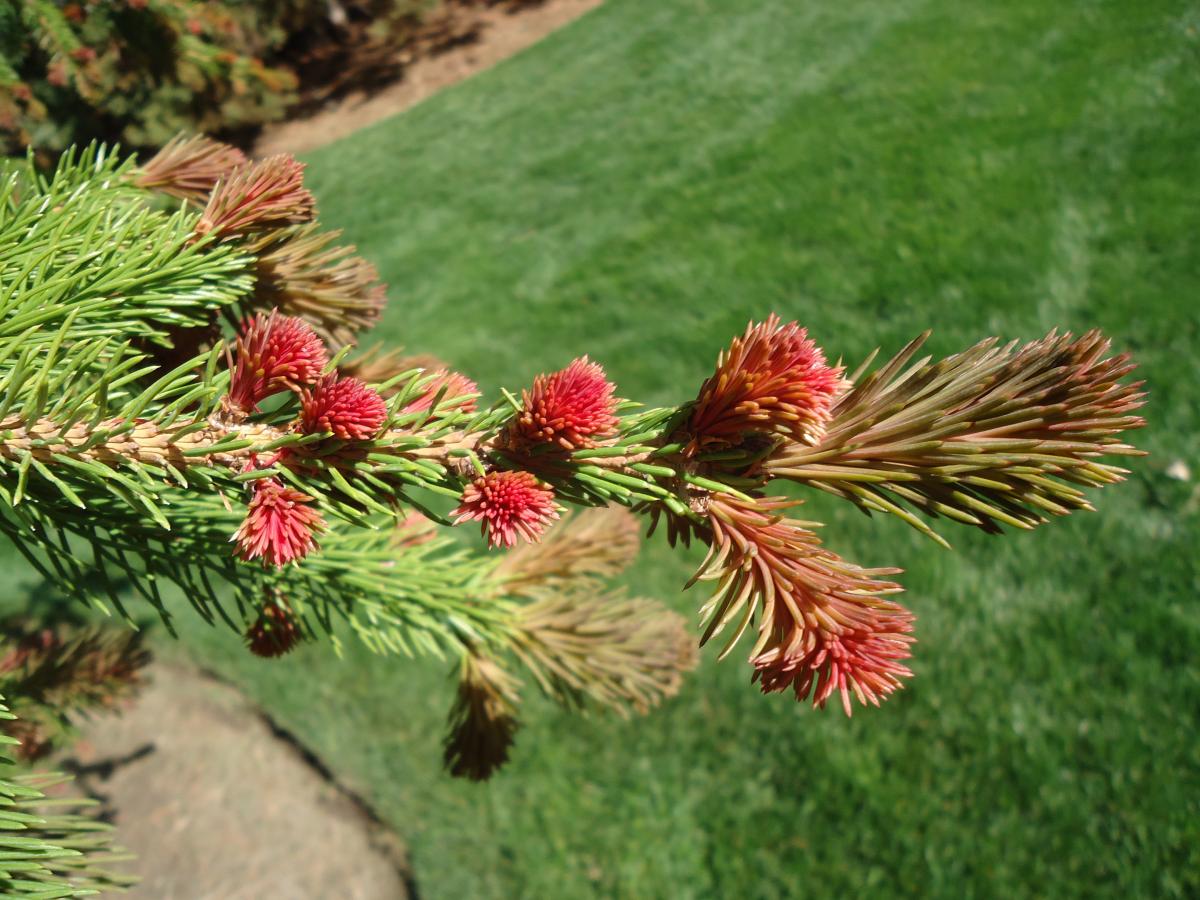
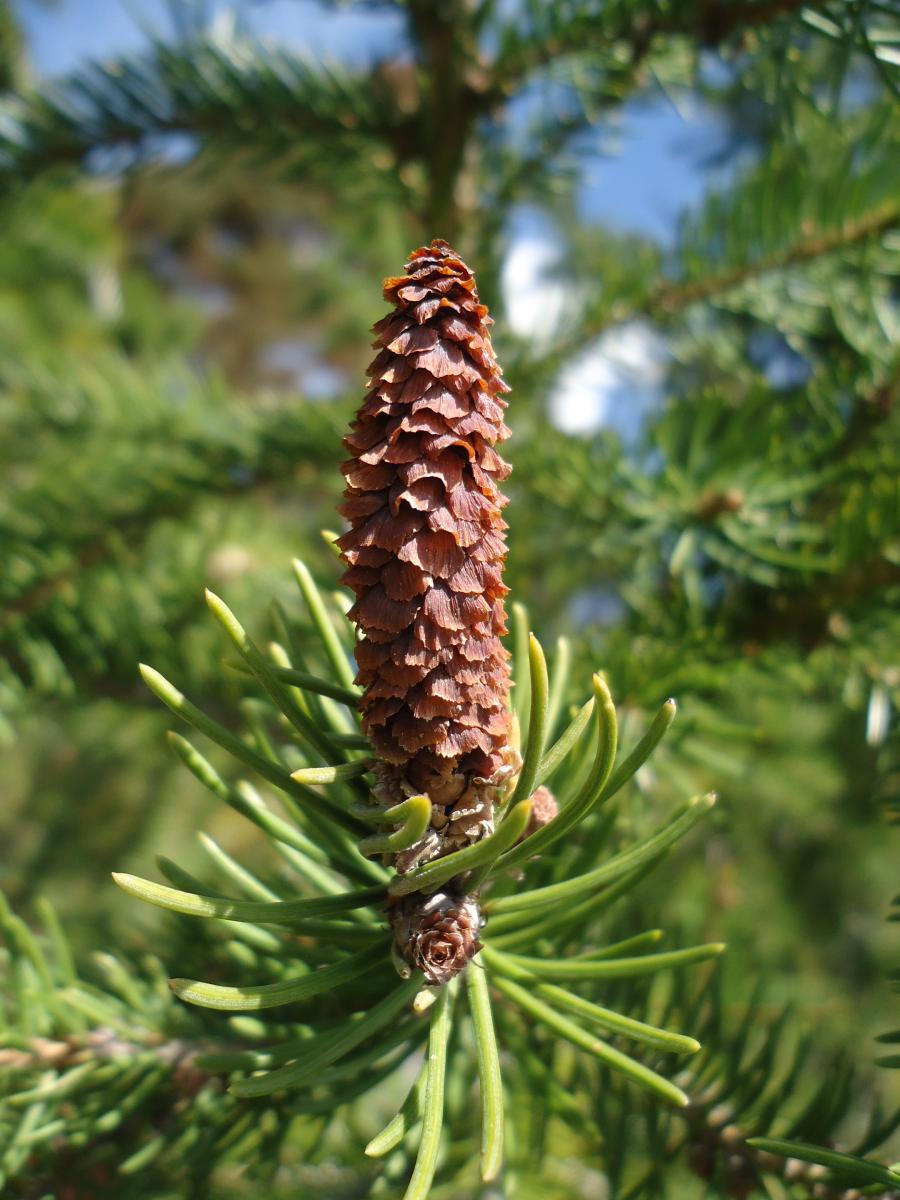
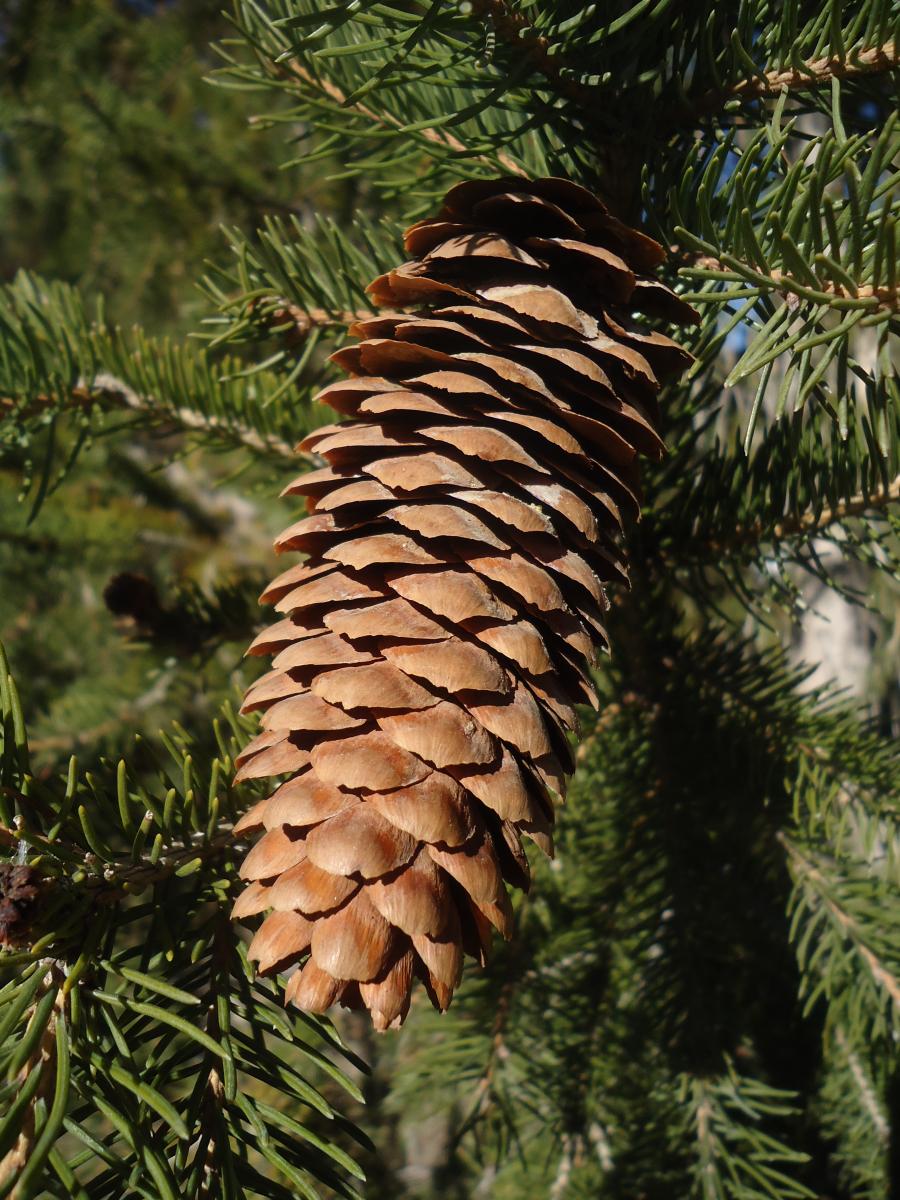
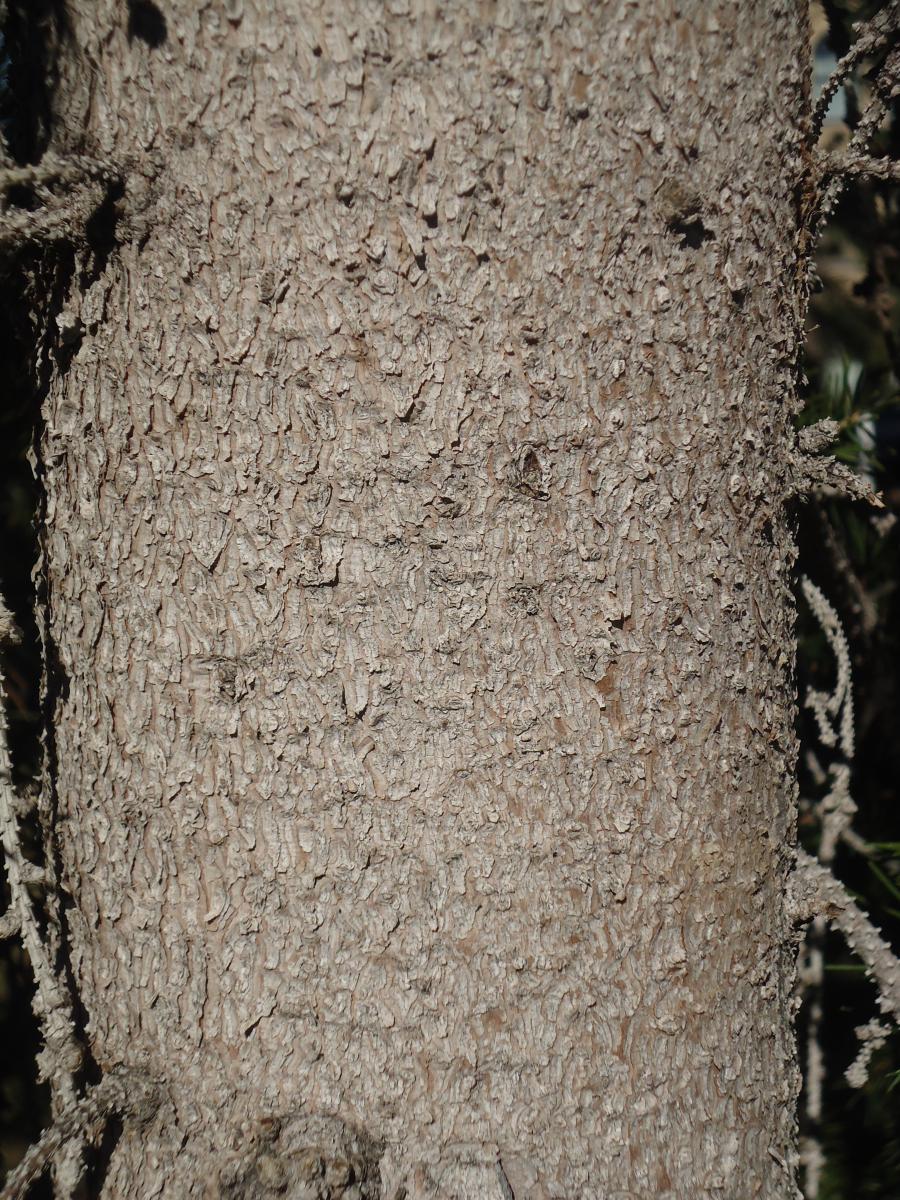
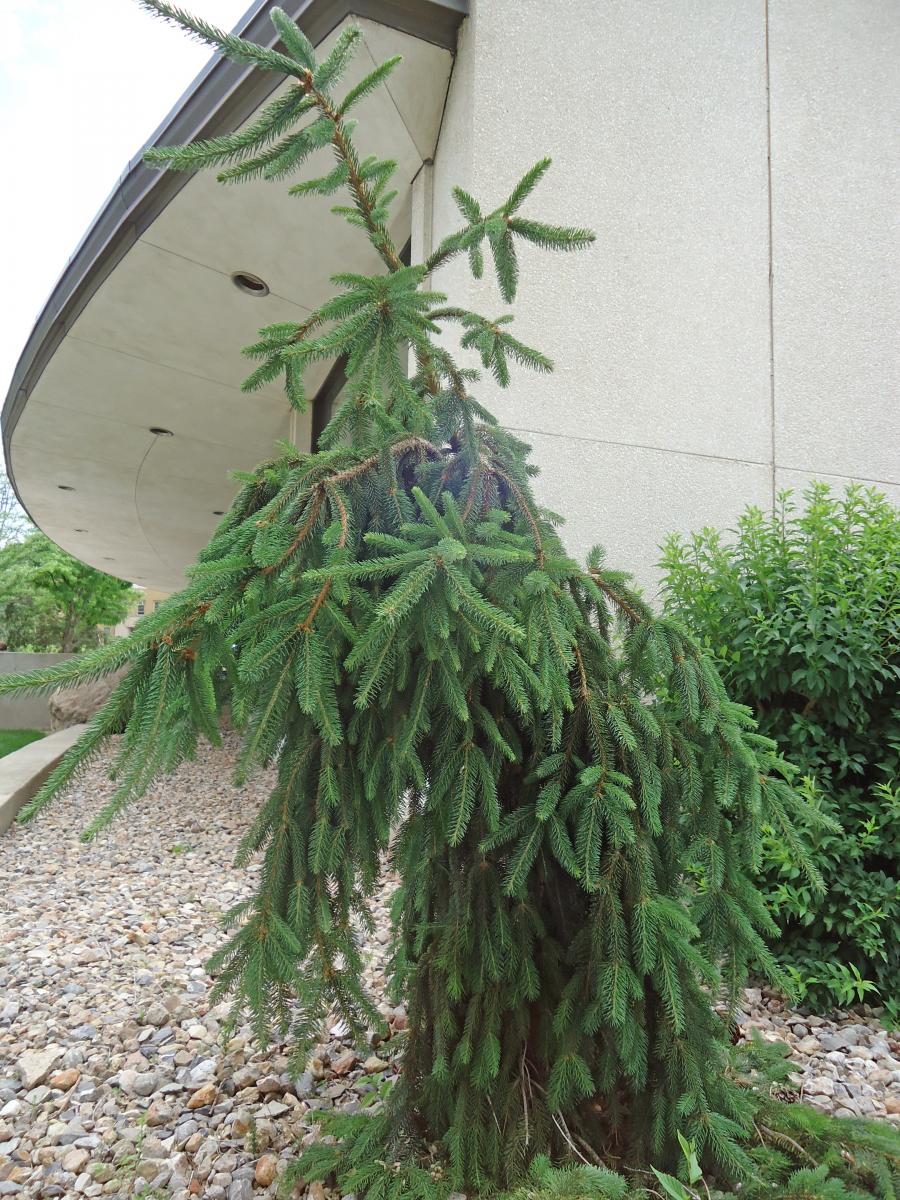
Picea abies
Leaves: Evergreen. Needles are ½ to 1 inch long and stiff, with a sharp tip. Light or dark green color, often shiny, with 2 or 3 stripes or lines on each side.
Bark/Twigs: Thin, light to dark gray colored bark on younger trees. Bark on older trees is thick, with small, thin, gray-brown, flaking scales and wide ridges.
Flowers/Fruit: Inconspicuous flowers. Cones are cylindrical, 4 to 6 inches long, 1½ to 2 inches wide and hang down. Pendulous cones are purple or green in youth, light brown at maturity.
Mature size and shape: Large. 30 to 60 feet high x 10 to 20 feet wide. Pyramidal with pendulous branches. The cultivar 'Pendula' has a smaller, unique weeping shape.
General information/special features: Plant in full sun. Tolerates light shade. Best in moderately moist, sandy, acidic, well-drained soil. Prefers a cold climate. Needs regular watering, especially in extreme heat.
Landscape use and maintenance: Good specimen tree. Norway spruces are more tolerant of hot, humid weather than many other conifers which typically like cool-summer areas. They do not do well in dry soil. Average growing rate. Low maintenance. Prune in early spring. The weeping variety Picea abies 'Pendula' makes a good focal point specimen and only grows 12 to 15 feet.
USDA Hardiness Zone: 3 to 7
Family/Origin: Pinaceae – Pine. Native to central and eastern Europe.
Campus Use: Somewhat uncommon. Can be found on the northeast side of President's Circle. Weeping variety can be found northwest of Chemistry (Bld 85).
